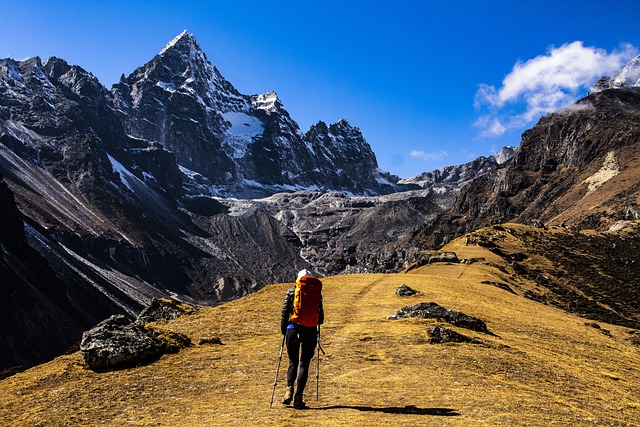Nature has a way of calling us to explore the great outdoors, and sometimes, it also calls for us to answer another kind of call – the call of the wild. When you’re hiking, it’s essential to be prepared for everything, including the times when you have to pee. Proper hygiene and environmental considerations are crucial not only for your comfort but also for preserving the environment and ensuring the enjoyment of fellow hikers.
In this article, I’ll guide you through the steps you need to take to pee responsibly and comfortably while hiking. I’ll discuss how to prepare for your trip, find the right spot, master the technique, and maintain cleanliness throughout the process. Our goal is to provide you with expert advice to ensure a positive and responsible outdoor experience. So, let’s dive into the world of responsible outdoor relief and explore the art of peeing while hiking.
Preparing for the Call of the Wild
Being prepared for the call of the wild is essential to ensure a smooth and enjoyable hiking experience. Here are some tips to help you gear up for the inevitable bathroom breaks on the trail.
Choose the right clothing and gear
- Quick-dry pants and shorts: Opt for hiking pants or shorts that are easy to pull down and can dry quickly if they get wet. This will make the process of peeing in the outdoors more comfortable and hassle-free.
- Female urination devices: For women, consider investing in a female urination device (FUD) that allows you to pee standing up. This can make the process more convenient and minimize contact with the ground.
Pack essential items
- Toilet paper or biodegradable wipes: Bring a small amount of toilet paper or biodegradable wipes for wiping. Remember to pack them out in a resealable plastic bag when you’re done.
- Hand sanitizer: Carry a small bottle of hand sanitizer to clean your hands after you’ve finished.
- Small resealable plastic bags or portable toilet kits: Use these to pack out used toilet paper or wipes, ensuring that you leave no trace behind.
Stay hydrated and plan your breaks
- Importance of hydration during hiking: Staying hydrated is essential for maintaining energy levels and preventing dehydration, which can lead to more serious health issues. Drink water regularly throughout your hike.
- Monitoring your fluid intake and timing your breaks: Be aware of how much you’re drinking and try to time your bathroom breaks accordingly. This can help you avoid having to stop in less-than-ideal locations or when it’s inconvenient for the rest of your group.
Selecting the Ideal Spot to Pee
Choosing the right spot to answer the call of the wild is crucial for both your privacy and the environment. Here are some tips to help you select the ideal location to relieve yourself while hiking.
Follow Leave No Trace principles
- 200 feet from water sources, trails, and campsites: To minimize the impact on the environment and other hikers, make sure to move at least 200 feet (about 70 steps) away from water sources, trails, and campsites before peeing.
- Choose durable surfaces: Opt for locations with durable surfaces, such as rocks, gravel, or dry grass, to minimize your impact on delicate vegetation and prevent water contamination.
Be aware of your surroundings
- Privacy considerations: Look for a spot that offers some privacy, such as behind a tree or a large rock, so you can feel comfortable while relieving yourself.
- Wildlife and plant life: Be mindful of the local wildlife and plants in the area. Avoid peeing near animal burrows, nests, or sensitive plant species that could be negatively impacted by human waste.
Factor in weather conditions and terrain
- Wind direction: Be conscious of the wind direction to avoid any unpleasant surprises. Face away from the wind to prevent urine from blowing back onto you or your clothing.
- Ground absorption: Choose an area where the ground can absorb your urine easily. Avoid peeing on hard surfaces or impermeable ground, as this can lead to runoff and potential contamination of water sources.
- Snow and ice considerations: In snowy or icy conditions, try to find a spot where your urine won’t be visible for an extended period. Melting snow with your urine can also impact the environment, so be cautious of where you choose to relieve yourself.
Mastering the Technique
Learning the proper technique for peeing outdoors is essential for comfort and minimizing your impact on the environment. Here are some tips for both males and females to master the art of relieving themselves while hiking.
The squatting technique for females
- Proper positioning: Find a stable surface to plant your feet shoulder-width apart. Squat down with your knees bent, keeping your back straight and your weight centered over your feet. Hold onto a tree or a rock for support if needed.
- Tips for maintaining balance: To maintain balance while squatting, lean slightly forward and avoid leaning too far back. If you’re struggling with balance, you can also use a trekking pole or a sturdy branch for added support.
The standing technique for males
- Proper positioning: Stand with your feet shoulder-width apart and ensure you have a stable footing. Face away from the wind to avoid any unintended splashes.
- Aiming and controlling the flow: Aim your urine stream downward and slightly to the side to minimize splashing. Control the flow to avoid creating too much runoff or splatter, which can impact the environment and your shoes or clothing.
Using a female urination device
- Selecting the right device: Choose a FUD that fits your anatomy and is easy to use and clean. There are many different styles available, so it may take some trial and error to find the one that works best for you.
- Proper usage and cleaning: Practice using your FUD at home before taking it on a hike. Follow the manufacturer’s instructions for proper positioning and usage. After using the FUD, clean it with water or a biodegradable wipe, and store it in a resealable bag until you can wash it thoroughly at home.
Clean Up and Hygiene
Proper clean-up and hygiene practices are vital for minimizing your impact on the environment and ensuring your own health and well-being. Here are some steps to follow to maintain cleanliness and uphold responsible outdoor behavior.
Disposing of toilet paper or wipes
- Packing out used materials: After wiping, place used toilet paper or biodegradable wipes in a resealable plastic bag or portable toilet kit. Seal the bag and pack it out with you to dispose of properly later. Never bury or leave used materials behind.
- Burning as a last resort: If you absolutely cannot pack out your used toilet paper or wipes, burning them is a last resort. Be extremely cautious with this method and only use it in areas where fires are permitted and the risk of wildfire is low.
Hand hygiene
- Using hand sanitizer: After peeing and handling any used materials, clean your hands with hand sanitizer to kill germs and prevent the spread of disease.
- Washing hands with biodegradable soap when available: If you have access to a water source and biodegradable soap, wash your hands thoroughly following proper hand-washing techniques. Be sure to do this at least 200 feet away from any water sources to prevent contamination.
Trail etiquette and social responsibility
- Respecting fellow hikers: Be discreet and mindful of other hikers when choosing your spot and during the process of peeing. Your actions impact others, so always aim to minimize any disturbance.
- Taking responsibility for your waste: Properly disposing of used materials and maintaining good hygiene practices shows respect for both the environment and your fellow hikers. Take pride in your role as a responsible outdoor enthusiast.
Dealing with Special Circumstances
Sometimes, unique situations call for additional considerations when it comes to peeing while hiking. Here are some tips for handling special circumstances that you might encounter on the trail.
High-altitude hiking and mountaineering
- Environmental considerations: At high altitudes, decomposition is slower, and the impact of human waste is more significant. Be extra cautious when selecting your spot, and ensure that you pack out all used materials.
- Snow and ice disposal techniques: In high-altitude environments, avoid peeing directly on snow or ice. Instead, find a rock or a crevasse where your urine can be absorbed, or use a designated “pee bottle” to collect your urine and dispose of it appropriately later.
Group hiking and backpacking trips
- Designated bathroom areas: In some cases, group hikes or backpacking trips may designate specific bathroom areas to minimize environmental impact. Be sure to follow the group’s guidelines and use the designated areas when available.
- Communicating with fellow hikers: Open communication within your group is essential. Inform your fellow hikers when you need a bathroom break and coordinate with them to ensure everyone’s needs are met while minimizing disruptions to the overall hike.
Conclusion
Answering the call of the wild while hiking is a natural part of any outdoor adventure. By following the expert advice provided in this article, you can ensure that you’re prepared, comfortable, and environmentally responsible when nature calls during your hikes. Remember to choose the right clothing and gear, select the ideal spot to pee, master the technique, maintain cleanliness, and be prepared for special circumstances.
By upholding the principles of Leave No Trace and practicing proper trail etiquette, you’ll not only preserve the beauty of the outdoors for yourself but also for fellow hikers and future generations. So, the next time you head out on the trail, embrace the call of the wild with confidence, knowing that you’re well-equipped to enjoy nature responsibly. Happy hiking!
You might also like: The Ultimate Guide To What NOT To Do During Hiking










